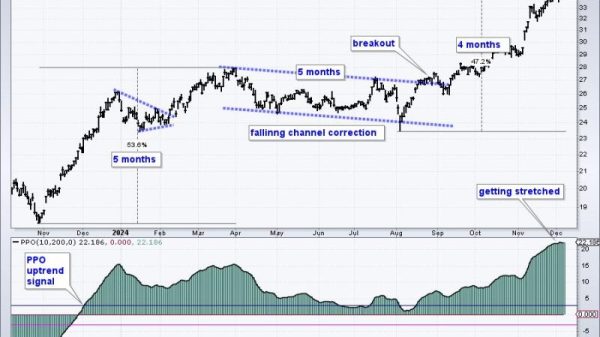Investors Hesitant ahead of Fed Meeting: How to Prepare
Market uncertainty tends to rise as investors eagerly await the outcomes of Federal Reserve meetings. As the central bank deliberates on monetary policy decisions, traders and investors often find themselves in a state of anticipation, analyzing every bit of information that could offer clues to the possible direction of interest rates and the general economic landscape.
Recent market movements leading up to the next Federal Reserve meeting suggest that investors are adopting a cautious stance. This hesitancy is not entirely surprising given the potential impact of interest rate changes on various asset classes and financial instruments. Against this backdrop, it becomes crucial for investors to develop a solid plan to navigate the uncertainties that lie ahead. Here are some essential steps to consider when preparing for a Federal Reserve meeting.
1. Stay Informed: Keeping a close eye on economic indicators and market trends leading up to the Fed meeting is vital. Pay attention to key data releases, such as inflation reports, employment figures, and GDP growth numbers. These indicators can provide valuable insights into the current state of the economy and help anticipate potential policy moves by the central bank.
2. Diversify Your Portfolio: Diversification is a fundamental principle of risk management. By spreading your investments across different asset classes, sectors, and geographies, you can reduce the impact of any adverse events on your overall portfolio. Consider allocating resources to both traditional and alternative investments to enhance diversification and mitigate risks associated with interest rate changes.
3. Review Your Risk Tolerance: Assessing your risk tolerance is imperative, especially in volatile market conditions. Evaluate your investment objectives, time horizon, and financial goals to determine the level of risk you are comfortable with. Understanding your risk profile will help you make informed decisions and avoid reacting impulsively to market fluctuations.
4. Consider Hedging Strategies: Hedging strategies can be a useful tool to protect your portfolio from potential downside risks associated with interest rate movements. Options, futures, and inverse ETFs are some of the common instruments used for hedging purposes. Consult with a financial advisor to determine the most appropriate hedging strategy based on your investment objectives and risk tolerance.
5. Maintain a Long-Term Perspective: While short-term market volatility may arise in response to Federal Reserve decisions, it is essential to maintain a long-term perspective on your investments. Avoid making hasty decisions based on short-term fluctuations and stay focused on your long-term financial goals. By adopting a disciplined approach and staying committed to your investment strategy, you can ride out market uncertainties with confidence.
In conclusion, preparing for a Federal Reserve meeting requires a comprehensive understanding of market dynamics, a prudent risk management approach, and a disciplined investment strategy. By staying informed, diversifying your portfolio, assessing your risk tolerance, considering hedging strategies, and maintaining a long-term perspective, you can navigate the challenges posed by central bank decisions and position yourself for long-term investment success.


























